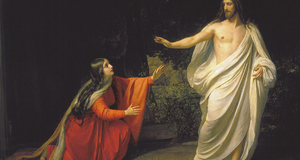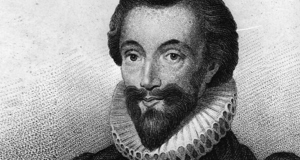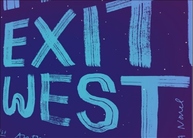The Past is Female: Exploring the Socio-Sexual Liberation of Historical Women in Carol Ann Duffy's The World's Wife
By
2022, Vol. 14 No. 04 | pg. 1/1 AbstractBritish Poet Laureate Carol Ann Duffy’s The World’s Wife presents a fresh outlook on myths and fairy tales, by retelling them through sociosexually liberated women. The poems feature many themes such as murder, sexuality and childhood that are presented in a dark light and have been individually studied by previous researchers. Other studies have also investigated the feministic political purposes of Duffy’s poetry, but have disregarded the present liberated perspective of women shown. Consequently, this research focuses on Duffy’s manipulation of well-known texts to induce a sense of pain caused by patriarchal oppression, which is then mobilized into pleasure in the freedom of liberated women. The study examines the poems “Little Red Cap,” “Eurydice,” “Mrs. Darwin,” “Salome,” and “Mrs. Icarus,” in exploring the presentation of liberated women through a reconfigured lens of Hedonic Theory with a focus on initiating motivation. This analysis indicates the importance in this collection given to the women’s own wits, strength, and capabilities, which allows them to be presented as equal, if not better than men, effectively utilizing hedonic theory to motivate readers to perceive the protagonists as liberated. The World’s Wife (1999), Carol Ann Duffy’s most critically acclaimed poetry collection, is a modernized narration of famous myths and fables retold through the perspective of a liberated female voice, depicting feminism through cleverness and humor (Mclaughlin). The collection’s success led to Duffy’s appointment as Britain’s Poet Laureate in 2009, making her the first female and openly bisexual poet holding this position (“Carol Ann Duffy”). Duffy’s success in the world of British poetry has made The World’s Wife subject to great research, due to its contributions to the world of British poetry in terms of its clever change-motivation. Consequently, understanding the underlying reasons for the collection’s success is crucial to implementing similar strategies in provoking change in future literature. To this effect, there is much investigation into the stylistic and structural devices implemented by Duffy, including the study of prominent themes of darkness (Whitley 103-114), feminism (Mhana et al.), sexuality, and childhood. There also exists a contradiction within present discourse wherein some find women to be depicted as a beloved protagonist (e.g., Mhana et al.) and others substantiate a balanced representation of the two sexes (Brown). Recent developments have investigated the intertwined relationship between mythology and Duffy’s poetry collection, portraying it as a conflation of history, literaturem and myth (Vujin). Overall, there has been extensive research into the devices that Duffy employs in depicting a need for feminist liberation, while there has been little research into how Duffy depicts preexisting liberation in women. The substantial gap in knowledge emerges as a product of the often-overlooked depiction of the strength and wit of the women within the poetry, which is used to highlight their self-found sociosexual liberation. This gap can be adequately covered through an analysis of a few select poems from the collection, specifically, “Little Red Cap,” “Eurydice,” “Mrs. Darwin,” “Salome,” and “Mrs. Icarus,” as chosen on the basis of their prevalent strong conformity with commonly brought up themes or styles relevant to this research.These poems are explored through the lens of hedonic theory, which finds that arousal in the form of pain or pleasure is the fundamental motivating factor in humans. While the theory focuses on human motivation towards finding arousal, it is important to evaluate the motivational features of arousal itself: the presence of arousal motivating humans to initiate change. Pertaining to Duffy’s use of sardonic humor in the poetry, pain and pleasure are both prevalent. Consequently, the impacts of hedonic motivation appear to initiate change in terms of liberation in the poetry. The poet evidences hedonic theory by arousing the readers, subsequently motivating them to view women as equals with the power to liberate themselves from oppression. Building upon the lens of hedonic theory, this research moves from understanding the general conventions used within the collection to delving into the various specific themes frequently utilized to demonstrate sociosexual liberation of women. Sociosexual liberation refers to the social aspects including marriage, profession and power dynamics, and the sexual aspects in the lives of the female protagonists. Ultimately, Duffy’s contemporary feminist poetic adaptations of myths and fables in The World’s Wife support the liberation of women through a deployment of hedonic arousal that reconfigures the pain of patriarchal oppression into a mobilizing, pleasurable freedom that positions women as equal, if not superior to males. Firstly, the poetry refigures the pain of patriarchal oppression through the usage of dysphemism to bring out themes of violence and murder towards men, inextricably binding the concept of sexual liberation to typically masculine acts performed by women, as particularly seen in “Little Red Cap” and “Salome.” “Little Red Cap” demonstrates the gradual sexual liberation of the narrator, who moves from being youthful, as “sweet sixteen, never been, babe, waif” towards being a murderer who kills the Wolf “as he slept, one chop, scrotum to throat.” This depiction of violence is echoed in “Salome,” with the narrator murdering the men who come to her bed, “like a lamb to the slaughter,” also mentioning “his head on a platter.” This dark, dysphemistic description induces a sense of hedonic pain in the readers, possibly leading to a change in how the women are viewed: equally capable of destruction. Furthermore, apart from dysphemism in both of the aforementioned poems, the protagonist’s gender in “Salome” is juxtaposed with her performing of traditionally masculine roles in order to highlight a sense of equal achievement among the sexes. The poem depicts an extended juxtaposition between conventionally feminine characteristics and Salome’s actions. For instance, Salome does not remember who she slept with the night before, and consequently, whose head she cut off. Her promiscuity and lack of emotion towards the killing are conventionally masculine traits directly contrasted with the “innocent” maid bringing her food. This hedonically painful depiction of the destruction caused by Salome’s masculine activities presents women to have similar sexual desires as men, as well as equally violent ones, moving away from the typical view of women being too emotional. While Salome is juxtaposed to femininity and merged with conventionally masculine traits, Red from “Little Red Cap” conjoins poetry to the masculine motif of The Wolf, then juxtaposing her position in the poetic world to her being female. The Wolf is depicted as incredibly masculine by using imagery along with onomatopoeia in describing his “wolfy drawl;” he is also commonly associated with poetry, as she sees him “reading his verse out loud,” later describing his breath “as the love poem.” This association of the Wolf and poetry creates a connection between the concepts of masculinity and poetry, which is later juxtaposed with Red discovering the poetry collection in the Wolf’s lair, and describing the feeling of reading as “warm, beating, frantic,” a lexical field of erotic words creating a feeling of orgasm. Finally, towards the end of the poem, Red demystifies traditional cliche imagery, evaluating the domination of male ideas in the poetic world such as by examining why the plant is called Weeping Willow, in stating, “I took an axe to a willow to see how it wept.” Red’s questioning of pre-existing poetry and her overall interest in poetry allow for the development of equality between the Wolf and her, thus creating an overall image of liberation. In both the women’s stories, the painful aspect of liberation (violence and murder) is turned into pleasure, in the form of conventionally masculine traits, to signify liberation in the form of equality. As in “Little Red Cap,” the theme of women in fields of literature is also explored in “Eurydice” to highlight the protagonist’s knowledge of literature, presenting her as an equal to her husband through the use of anachronism; in doing so, Duffy also highlights the hedonically painful challenges faced by women working in this field. The poem, narrated by Eurydice, frequently utilizes contemporary sales terminology such as “pitch” and “blurb,” which highlight her modern knowledge. Eurydice also counters how Orpheus presents himself, “Bollocks. (I’d done all the typing myself I should know),” a phrase that highlights her liberation in mocking her husband, as well typing (anachronic), which allows her to play a role in the field of literature while also possibly acting as a critique of women having to perform lowly roles like the typist. Furthermore, Duffy demonstrates Eurydice’s knowledge of poetry as Eurydice is claimed to be “trapped in his images, metaphors, similes.” This highlights the male dominance in literature (“his”), as well as Eurydice’s vast knowledge within the field – to the extent that she is capable of doing it professionally. Social liberation, then, is presented as the literary knowledge Eurydice holds, alongside the readers being informed about the male dominance in the poetic world that she had to overcome to learn this information. In light of the hedonic theory, Eurydice overcomes the pain of male dominance in literature, to find the pleasure in professional liberation by having knowledge of literature. Building upon the social liberation highlighted in “Eurydice,” social liberation is also presented through the context of liberation from marital roles by using symbolic imagery, and imperative tonality contrasted with Eurydice’s wit. Duffy utilizes many phrases connected to literature to illustrate Eurydice’s situation, such as painting the Underworld as “a place where language stopped.” Later, Eurydice’s situation is written to have “suited [her] to the ground,” which describes it as one that was beneficial to her, alongside exemplifying her relief in being dead. The literary language may symbolize Orpheus, as connected to his profession in poetry. Consequently, his absence is a world of silence, where she feels liberated from her role of “The Muse.” Yet, his return forces her to continue to oblige his wishes, indicated by the imperative in “I must follow him back.” Her continued obligation to Orpheus, a hedonically painful element, is broken by the usage of her wits in getting him to turn back and look at her, effectively breaking the condition of her return. By complimenting his poetry, Eurydice gets him to turn, thus returning her to the Underworld, a liberation that causes her pleasure. Hedonic motivation is ultimately importantly seen throughout the poem, while first feeling pain when entrapped in the marriage, to later feeling pleasure in being liberated from it. Eurydice’s wit is then used as motivation to perceive her as a liberated woman, rather than one that needs saving, a direct contrast to Orpheus’ representation within the poem. Despite a large focus on liberation in terms of presenting women to be equally capable as men in the aforementioned poems, other poems within the collection focus on presenting women as more superior than them, by demonstrating contempt for the men by humiliating them, as seen particularly in “Mrs. Darwin” and “Mrs. Icarus;” effectively, this promotes a sense of pain in the men and pleasure in the women. Narrated by the wives of famous men, “Mrs. Darwin” and “Mrs. Icarus” are insult poems that share an almost-identical rhyme scheme (ABCB and ABCDB - with the B rhyme in the second and last lines for both). The poems, additionally, present the husbands as allegorical in order to represent men as a whole, done in “Mrs. Darwin” by writing “I said to Him,” without naming who she is referring to, and in Mrs. Icarus by beginning with “I'm not the first or the last,” consequently applying the poem to many men. Finally, both poems pain the men by humiliating them. “Mrs. Darwin” turns her husband’s research against him by telling him “Something about that Chimpanzee over there reminds me of you,” and “Mrs. Icarus” calls her husband a “Grade A pillock.” This mocking effectively places the wives on a pedestal, giving them the power to be able to show contempt towards their husbands, something that may be pleasurable to the readers. The select poems from The World’s Wife, despite being too few to generalize to the entire collection, present a strong conformity in taking its readers on a hedonically motivated ride that moves through moments of sadness, anger and humor, all while preserving the greater idea of viewing women as liberated. This journey that Duffy immerses her readers in demonstrates a vast range of themes including women in literature, violence and murder, as well as contempt for men, in addition to which she incorporates biographical elements, which are worth being investigated further. The smooth connection within these poems to the hedonic theory remained – prior to this research – a topic that had not been studied, even though, as the analysis suggests, it has many fruitful findings. This gap is indicative of more lapses in research that should be covered in attempting to understand the depth of Duffy’s poetic thinking. While the collection questions the stories that its readers grew up with, presenting an alternative view, there is great cognitive dissonance that the poetry causes, another element that needs to be understood in thoroughly analyzing this collection. When considered together, these various steps in the journey Duffy takes us on demonstrate the depth of her poetry, alongside possibly exemplifying that women in literature are equal to, if not better than men. References“Carol Ann Duffy.” Poets.org, Academy of American Poets, poets.org/poet/carol-ann-duffy. Duffy, Carol Ann. The World's Wife. Picador, 2017. Flood, Alison. "Carol Ann Duffy Is 'Wrong' about Poetry, Says Geoffrey Hill." The Guardian, 31 Jan. 2012, https://www.theguardian.com/books/2012/jan/31/carol-ann-duffy-oxford-professory-poetry. Accessed 6 April 2021. Holownia, Olga. "‘Well, Let Me Tell You Now’: The Dramatic Monologue of The World’s Wife." Poetry Criticism, edited by Lawrence J. Trudeau, vol. 166, Gale, 2015. Gale Literature Resource Center, link.gale.com/apps/doc/H1420119405/LitRC?u=ubcolumbia&sid=LitRC&xid=c3099920. Originally published in Poetry and Voice, edited by Stephanie Norgate and Ellie Piddington, Cambridge Scholars, 2012, pp. 62-75. Accessed 4 April 2021. Hudson, Libby. "'An axe to a willow to see how it wept': the creative use of cliche and the commonplace in Carol Ann Duffy's The World's Wife is analysed by Libby Hudson." The English Review, vol. 18, no. 2, 2007, p. 38+. Gale Literature Resource Center, link.gale.com/apps/doc/A170860582/LitRC?u=ubcolumbia&sid=LitRC&xid=80b7a428. Accessed 4 April 2021. Mclaughlin, Gemma E. “Children's Book Review: The World’s Wife- Carol Ann Duffy.” The Herald, Herald & Times Group, 11 Nov. 2018, www.heraldscotland.com/arts_ents/17210157.childrens-book-review-worlds-wife--carol-ann-duffy/. Mhana, Z. A., R. B. Talif, H. Kaur, and Z. I. Zainal. “Emancipatory Discourse in Carol Ann Duffy’s The World’s Wife.” Humanities & Social Sciences Reviews, vol. 7, no. 4, Sept. 2019, pp. 176-83, doi:10.18510/hssr.2019.7423. Accessed 4 March 2021. Souder, Donna McKinney. "Duffy, Carol Ann." Encyclopedia of Women in Today's World The Multimedia Encyclopedia of Women in Today's World. Edited by Mary Z, Stange Carol K., Oyster and Jane E. Sloan. 1st ed., vol. 1. Thousand Oaks: SAGE Publications, Inc., 2011, pp. 432-33. SAGE Knowledge. doi: http://www.doi.org.ezproxy.library.ubc.ca/10.4135/9781412995962.n230. Accessed 6 April 2021. Vujin, Bojana. “‘Behind Our Lullabies’: Feminine Mythologies in Contemporary Women’s Poetry.” Annual Review of the Faculty of Philosophy / Godisnjak Filozofskog Fakulteta, vol. 44, no. 1, Jan. 2019, pp. 43–55. EBSCOhost, doi:10.19090/gff.2019.1.43-55. Accessed 6 April 2021. Winterson, Jeanette. “Jeanette Winterson on the Poetry of Carol Ann Duffy – of Course It's Political.” The Guardian, 15 Jan. 2015, www.theguardian.com/books/2015/jan/17/jeanette-winterson-on-carol-ann-duffys-the-worlds-wife. Accessed 4 April 2021. Yun, Jihyun. "The Power of Women's Laughter in Carol Ann Duffy's "The Laughter of Stafford Girls' High"." Texas Studies in Literature and Language, vol. 61 no. 3, 2019, p. 291-310. Project MUSE muse.jhu.edu/article/732629. Accessed 6 April 2021. Suggested Reading from Inquiries Journal
Inquiries Journal provides undergraduate and graduate students around the world a platform for the wide dissemination of academic work over a range of core disciplines. Representing the work of students from hundreds of institutions around the globe, Inquiries Journal's large database of academic articles is completely free. Learn more | Blog | Submit Latest in Literature |


















